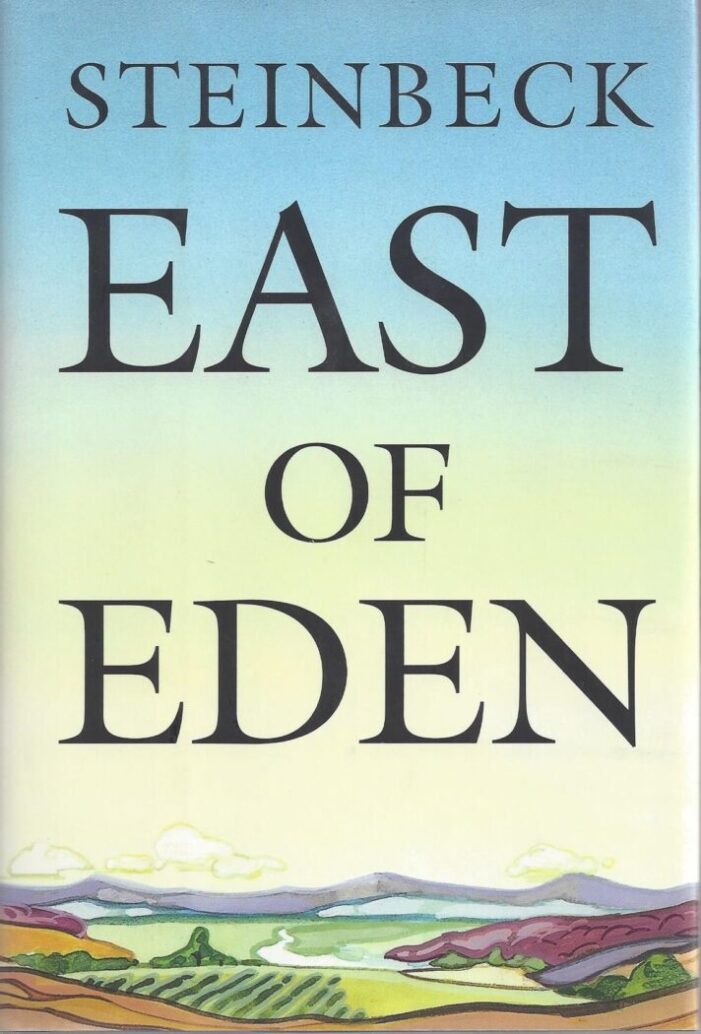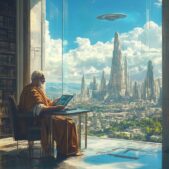John Steinbeck, “East of Eden”
I am sometimes very saddened by the fact that the true masters of the pen often do not catch in their lifetime the recognition they undoubtedly deserved. Pulitzer and Nobel Prizes posthumously, worldwide circulation and translations into dozens of foreign languages, enrollment in the ranks of classics and the like – all this is encouraging, but where were you before, when the man was still breathing and walking on the same earth as us?! Alas, we do not know how to appreciate what we have at the moment, and the realization of its importance comes too late. To a certain extent these words apply to John Steinbeck. His book East of Eden was received rather coldly, or even hostilely. But how dramatically events have changed just a few decades after its first publication!
Believe me, it is quite difficult to piece together all the scattered thoughts and write a coherent impression of a book like East of Eden. The fact is that this is not just a book, but a whole epic saga, in which space is given to several generations and a huge variety of problems, and life to them gave the beautiful language of John Steinbeck, his unique ability to subtly use metaphors, create perfect images, as well as fill his text with multifaceted ideas. As in his other landmark work, The Grapes of Wrath, Steinbeck draws on a powerful biblical stratum, the basis of which became the prototype for the book’s main characters as well as some events. But we’ll talk about that a little later!
What is the book about?
The main events in the work unfold around the different generations of the Trask family: grandfather Cyrus Trask, then his sons Adam and Carl, and Adam’s sons Caleb and Aron. The action stretches over a long half century, spanning the second half of the 19th century, all the way to the end of World War I. In the book, the author introduces us to other families (the Hamiltons, for example), as well as people of all sorts of professions and occupations: farmers, businessmen, courtesans. Steinbeck spent several years in the archives, studying the real history of the Salinas Valley, and therefore his work turned out so believable that the first impressions of the Salinas themselves were extremely indignant: how dare the writer show the whole truth about their corruption, debauchery and drunkenness!
So what is the book actually about? If someone says that it is dedicated to the eternal confrontation between good and evil, I probably would not agree with this statement. There is no exceptional good in this book, in fact, nor is there any real evil incarnate! I will not accept your argument that Kathy Trask was that evil for one simple reason: Steinbeck is an exemplary author (in Umberto Eco’s theory, like a voice that sounds in the reader’s mind, leads and guides him in the direction he needs), like God creating images of people and explaining their fundamental nature and significance. So in his explanation, Cathy cannot be called an evil creature; her essence is somewhat above what is considered deliberate deceit.
Here it is necessary to make a small digression and explain the biblical basis of the work, perhaps the meaning of the previous paragraph will be clearer. So, when reading the book, it is impossible not to notice a clear parallel between the Trask family and the history of the first men created by God. The aforementioned Adam (accented with a capital “A”) Trask, as silly as it may sound, is the real prototype of that very Adam (accented with a second “a”), the first man on earth. Like his biblical prototype, Adam Trask had two sons, Caleb and Aron. By the way, their names were also taken from the Bible, and with the proper imagination you can find a certain consonance between Cain and Caleb, Abel and Aron. The fate of the sons is also similar in many ways: two boys completely different in their spiritual world, different interests and goals and hobbies. As in the Bible, the brother kills the brother, but in Steinbeck it happens differently, as if indirectly, however, the message remains the same.
What about Eve? In the Bible, Eve is the first woman created from Adam’s rib, the first mother who gave birth to two sons. She is also the embodiment of purity and a kind of feminine holiness; in fact, it was she who was tempted by the serpent, she who caused their expulsion from the Garden of Eden, it was she who gave life to the first murderer of man. If we take all these characteristics into account, we get a very contradictory image. It is precisely this kind of contradictory image that Steinbeck creates in the person of Cathy Trask.
It is difficult to say what meaning or prototype John Steinbeck put into the image of Cathy. Was it Eve and her multi-facetedness, or was it simply the inflamed imagination of the author of these lines? I guess everyone will answer for themselves.
A Realistic Documentary
However, the biblical background is not the only thing that makes this novel significant! I have already mentioned above that the writer’s constant visits to the city archives of Salinas played a major role in depicting details and everyday life. That is why we see such a naturalistic portrayal of life a century ago.
We watch Sam Hamilton, an extremely pleasant and good-natured farmer, with undisguised awe. Lee, the Chinese servant, is, contrary to his silly image, very intelligent and just about the only character who can think straight and deeply. I assure you that the uniformity of images in Steinbeck you and certainly not find. In addition to these generations, the writer introduces in his story a whole layer of the population, each cell of which is endowed with unique characteristics. There is a place in the narrative and the family of some Steinbeck – surely the writer decided to leave a piece of himself in the story of this book. And therefore the elements of autobography can be seen with the naked eye, not for nothing the author himself was born and spent his childhood in the Salinas Valley of California.
The writer himself considered the book East of Eden “his seminal work, in which he wanted to draw a final line under the entire work, to explain everything to which he had devoted his life. Steinbeck was very much afraid of being rejected, and as I wrote above, that is exactly what happened. Even during his lifetime his work was poorly received by the critical community, and frankly, I can agree with them on some things. “East of Eden” is a very visceral read, not without stages of misunderstanding and rejection, but in my mind, it is more a reader’s failure than an author’s failure. It is therefore necessary to accept the scope of the writer’s thought and the level of the problems, and to strive for the epicness, on the altar of which Steinbeck has placed all his strength, skill, and knowledge.


